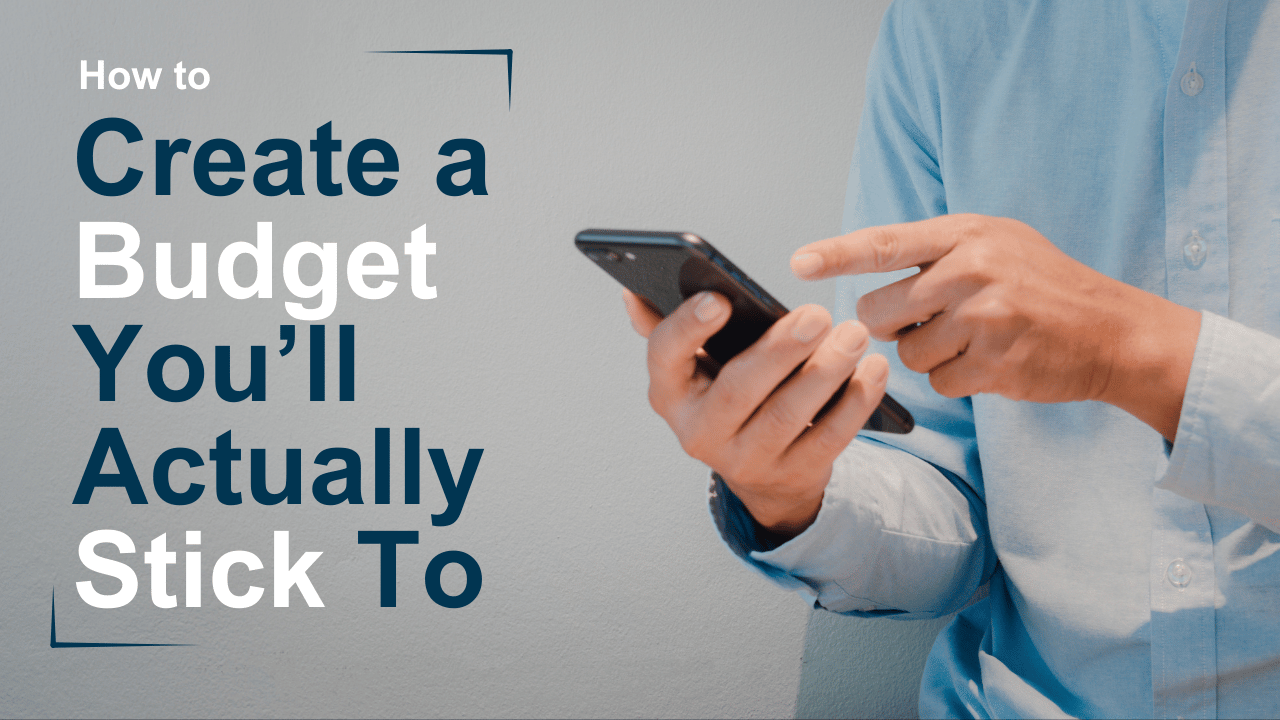How to Create a Budget You’ll Actually Stick To
Most of us know we should budget — but sticking to one is a different story. The problem isn’t a lack of willpower, it’s usually that the budget itself doesn’t fit real life. That’s why PocFin, our budgeting app, is built to help you create a plan that works for you — simple, flexible, and easy to maintain.
In this guide, we’ll walk you through a practical step-by-step approach to building a budget you’ll actually follow.
Step 1: Know Your Income
Before you can create a budget, you need to understand exactly how much money is coming in each month. This includes:
-
Your salary (after tax)
-
Freelance or side hustle income
-
Investments or passive income
Tip: Use your net (take-home) pay, not your gross salary, so your numbers stay realistic.
Step 2: Track Your Spending Daily
Instead of automatic tracking, PocFin encourages you to enter your transactions each day. While this may sound like extra effort, it’s actually a benefit — it makes you more conscious of where your money goes on a daily basis.
When you enter expenses manually, you build awareness of spending habits and reduce “invisible” money leaks like takeaways, impulse buys, or unused subscriptions.
Why this matters: Awareness is the first step to control.
Step 3: Categorise Into Needs, Wants, and Savings (Rule of Thumb)
One simple framework is the 50/30/20 rule:
-
50% Needs: rent, groceries, transport, utilities
-
30% Wants: dining out, entertainment, hobbies
-
20% Savings: emergency fund, retirement, investments
But remember: this is just a rule of thumb. Everyone’s life stage is different — a student, a new parent, or someone close to retirement will all have different priorities. Use this as a guide, not a hard rule.
Step 4: Build an Emergency Fund (3 Months of Income)
Before you invest, it’s essential to build a safety net. Aim to save at least 3 months of your salary in an emergency fund. This protects you if you face job loss, medical bills, or unexpected expenses.
Where to keep your emergency fund:
-
Savings account: Quick access, but be mindful — it can feel “spendable.”. Your banks interest rates are very low in a savings account so think about keeping 1/3 of your emergency fund in your savings and the rest in a low-risk, above-inflation stock. The 1/3 ensures you have easy access to cash if needed while the 2/3 work for you in a stock.
-
Money market fund: Offers a higher and more consistent return than your savings account or a more risky stock. Most stock-buying platforms can sell your shares and have it to you within 5 working days so access is relatively fast.
-
Low-risk stock or ETF: Can grow slightly, but pick something stable enough that short-term fluctuations won’t wipe out value if you need to withdraw.
- Note: your emergency fund is not your long-term investment strategy nor should it be treated as easily accessible cash when wanting to buy a new car, but should be perceived as money for emergencies only.
The key is liquidity and stability — money you can access within days, without losing value.
Step 5: Set Realistic Goals
A budget isn’t about restriction — it’s about direction. It's about staying on top of your money so you feel in control, not the other way around. A budget helps to stick to your goals, whether it’s paying off debt, saving for a vacation putting your kids through school, preparation for retirement, or building that emergency fund, goals give your budget purpose.
Pro tip: Start small. Aim to save R500 this month before setting bigger targets. Small wins build momentum.
Step 6: Review and Adjust Regularly
Life changes — and so should your budget. Don’t treat it as a strict set of rules, but as a living plan that adapts to you. If you overspend in one category, adjust next month rather than quitting altogether. Move money around and change your category spending budget if one needs to be higher while another can be lowered, do it!
How PocFin Helps You Stick to Your Budget
Creating a budget is one thing — sticking to it is another. That’s where PocFin comes in:
-
Daily transaction entry: Build awareness of your spending habits instead of letting them slip under the radar.
-
Smart categorisation: Organise expenses into budgets that make sense for your lifestyle.
-
Budget cycle resets: At the start of each cycle (beginning of every month), PocFin automatically refreshes your budget categories (whatever you saved or overspent on a category within your budget, it can get pulled over to the next month or send it to that savings goal!). This gives you continuity in your month-to-month spending making it easier in the process - no more complicated spreadsheets and manually adding what was left or overspent to the next month, PocFin achieves this in a fun way!
-
Insights & tips: Learn from your spending patterns and apply small changes that build up over time.
Did You Know? The Impact of Budgeting
Research shows that people who budget are more financially secure and confident. According to a survey by Debt.com, 85% of people who budget regularly say it helps them get ahead financially (source). Yet, many still avoid budgeting because they believe it’s too complicated — which is exactly why PocFin exists.
Final Thoughts
Budgeting doesn’t have to be complicated. By knowing your income, tracking spending daily, categorising expenses, building an emergency fund, setting goals, and reviewing regularly, you’ll create a plan that works for your real life. And with PocFin by your side, you’ll actually stick to it.
Cheers,
The PocFin Team
